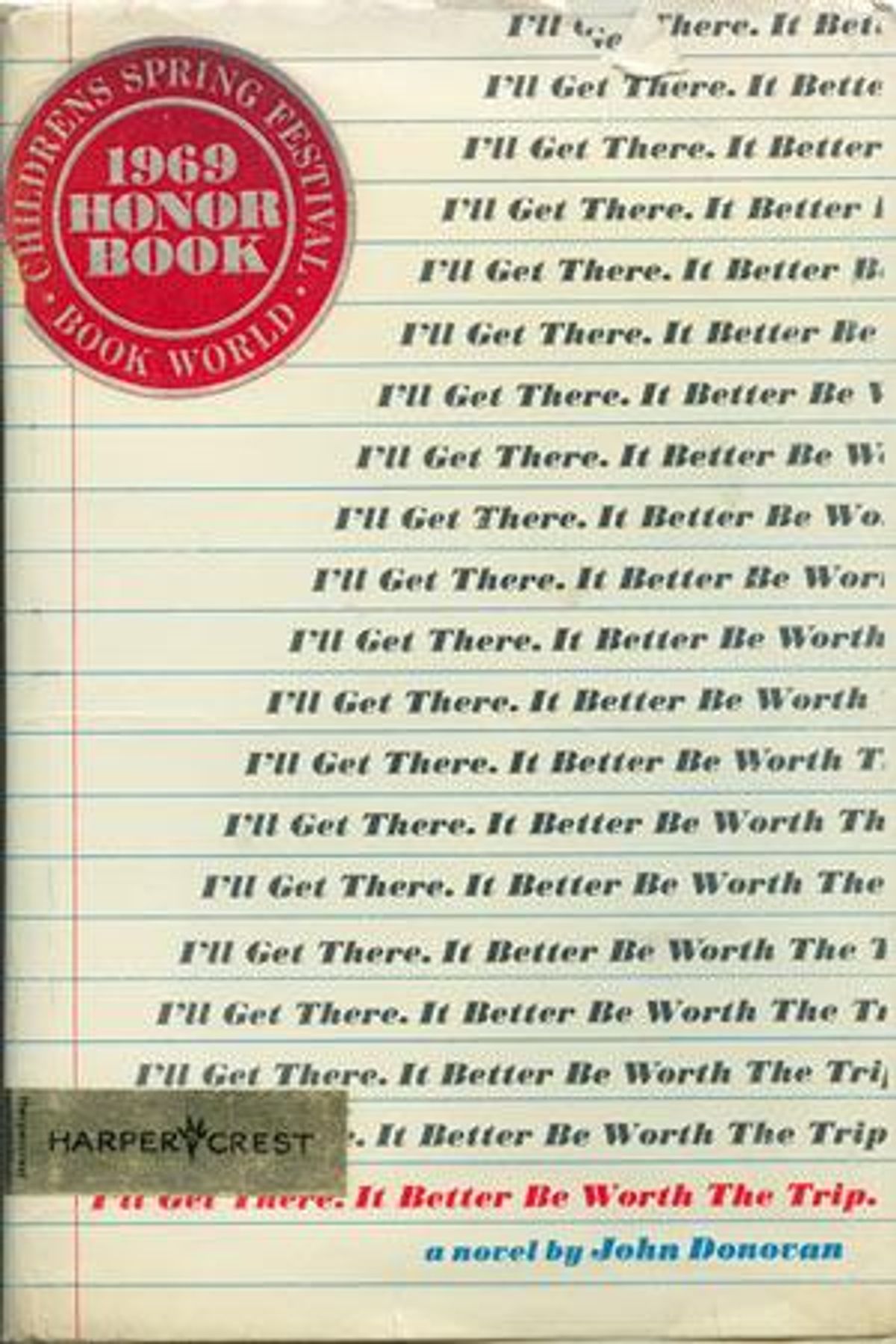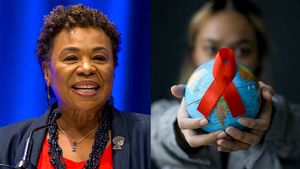CONTACTStaffCAREER OPPORTUNITIESADVERTISE WITH USPRIVACY POLICYPRIVACY PREFERENCESTERMS OF USELEGAL NOTICE
© 2025 Pride Publishing Inc.
All Rights reserved
All Rights reserved
Scroll To Top
By continuing to use our site, you agree to our Private Policy and Terms of Use.
Going to college in Virginia in the early 1970s, I was so hungry for gay stories that Id read anyone, from established names like Andr Gide and Gore Vidal to newer, unfamiliar writers like James Kirkwood and Jonathan Strong. In the bookstore one day, I stumbled on a paperback with a jaunty title, Ill Get There. It Better Be Worth the Trip., described on the back as the story of a troubled friendship between two boys who have a moment of open sexuality. I didnt care that the book was aimed at adolescents. I was only 20, so I was almost a teenager myself. I bought it immediately, read it in a day, and enjoyed it thoroughly. Then I forgot it -- until years later when an editor friend told me that it had been a breakthrough novel in the world of young adult fiction.
Young adult (YA) fiction did not yet have a name in 1968 when John Donovan, a 39-year-old bachelor who worked for the Childrens Book Council, wrote a letter to the head of the Department of Books for Boys and Girls at Harper & Row and asked if shed be interested in a story about buddy-love. The new realism had just arrived in childrens literature, producing such work as Its Like This, Cat by Emily Cheney Neville; Harriet the Spy by Louise Fitzhugh (a butch lesbian); and The Outsiders by S. E. Hinton (then a teenager herself). Editors were open to fresh material, even a tale of two 13-year-old boys who develop crushes on each other. Harper & Row said yes and Ill Get There was published in 1969, a few months before the Stonewall rebellion, to surprisingly good reviews.
Donovan wrote a few more books and a play. He died in 1992 when he was 63. His first book lives on, however. Ill Get There has just been reissued in a 40th anniversary edition with smart appreciations by gay YA novelists Brent Hartinger and Martin Wilson; a lovely introduction by Donovans niece, Stacey Donovan; and an invaluable essay by scholar Kathleen Horning.
How does the book read today? Very well. It begins more slowly than what were used to -- Davy, the narrator, doesnt meet Doug until page 73 -- and Davys dachshund, Fred, fills a lot of text; Davys boozy mother could use another color or two. But the friendship of Davy and Doug, two secretly lonely boys at a private school in New York City, is beautifully depicted, with great attention to emotional detail. Their friendship slides first into love and later into kissing. They are caught queering around, which leads to an accident that produces additional anger and blame. Donovan resolves it all very gently. Doug sounds convincingly adolescent and profound when he declares, Go ahead and feel guilty if you want to. I dont.
Theres now a wealth of excellent YA novels with gay and lesbian characters, as protagonists or friends and family. Im thinking in particular of The Perks of Being a Wallflower by Stephen Chbosky, Love & Lies by Ellen Wittlinger, and Blue Boy by Rakesh Saytal, to name just a few recent titles that have given me pleasure. Yet it started 40 years ago with the quiet story of two boys and a dachshund.
Ill Get There. It Better Be Worth The Trip.: 40th Anniversary Edition will be published September 1 by Flux.
From our Sponsors
Most Popular
41 male celebs who did full frontal scenes
September 16 2024 2:02 PM
39 LGBTQ+ celebs you can follow on OnlyFans
November 19 2024 9:39 AM
33 actors who showed bare ass in movies & TV shows
September 17 2024 5:43 PM
26 LGBTQ+ reality dating shows & where to watch them
December 10 2024 12:38 PM
21 times male celebrities had to come out as straight
November 19 2024 3:33 PM
17 queens who quit or retired from drag after 'RuPaul's Drag Race'
November 30 2024 12:26 AM
52 steamy celebrity Calvin Klein ads we'll always be thirsty for
August 27 2024 1:08 PM
15 things only bottoms understand
October 08 2024 5:18 PM
15 gay celebrity couples who make us believe in love
October 03 2024 5:43 PM
A gay adult film star's complete guide to bottoming
September 16 2024 8:50 AM
Latest Stories
What is the cost of deepfakes? The Advocates explores
January 06 2025 4:44 PM
Police share update on The Vivienne's death
January 06 2025 3:30 PM
'Challengers,' 'Wicked,' & other LGBTQ+ snubs at the 2025 Golden Globes
January 06 2025 2:53 PM
RuPaul shares emotional statement about The Vivienne's passing
January 06 2025 11:44 AM
'Emilia Pérez,' 'Baby Reindeer,' and more LGBTQ+ wins at the 2025 Golden Globes
January 06 2025 10:04 AM
Karla Sofía Gascón delivers powerful message on trans visibility at Golden Globes
January 05 2025 11:41 PM
Elton John gives humorous update on his health at the Golden Globes
January 05 2025 10:37 PM
100+ 'Drag Race' stars & celebs mourn The Vivienne's passing
January 05 2025 6:05 PM
'Drag Race UK' winner The Vivienne reportedly dies at 32
January 05 2025 3:04 PM
A brief history of the Glinda & Elphaba couple ship in 'Wicked'
January 03 2025 5:54 PM
Meta slammed for 'disturbing' AI profiles—like a fake Black queer mom
January 03 2025 5:29 PM
'Squid Game' actor donated Netflix check to trans doctoral student
January 03 2025 3:31 PM




















































































